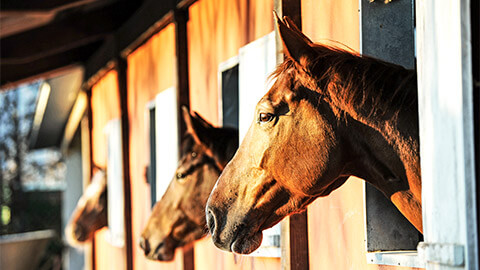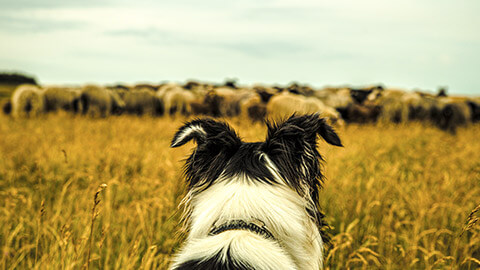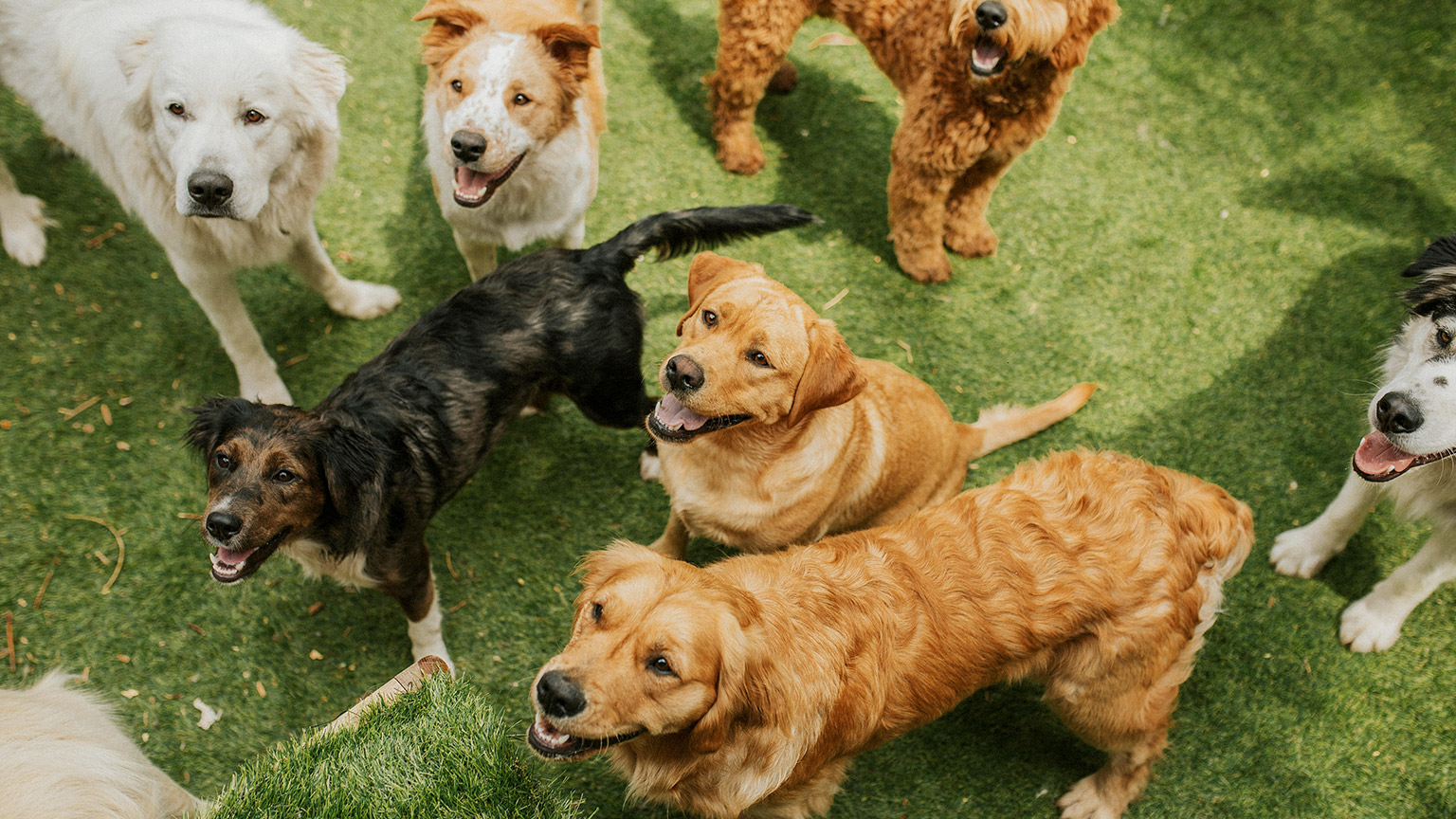Animal behaviour refers to how animals interact with each other, their environment, and other living beings. It encompasses all the actions and reactions an animal exhibits in response to internal stimuli (like hunger or fear) and external (like the presence of a predator or changes in temperature). Understanding animal behaviour ensures their welfare, training, conservation, and management.
Key Aspects of Animal Behaviour
Instinctive Behaviour
- Definition: Innate behaviours that are hardwired into an animal's genetics are typically performed correctly the first time.
- Examples: Birds building nests, spiders spinning webs, and turtles heading to the sea immediately after hatching.
Learned Behaviour
- Definition: Behaviours that animals acquire through interaction with their environment and experiences.
- Examples: A dog learning to sit on command, a cat avoiding a hot stove after being burned once, or birds learning songs from their parents.
Social Behaviour
- Definition: Interactions between members of the same species, which can include cooperation, competition, mating, and parenting behaviours.
- Examples: Wolves hunting in packs, primates grooming each other, and bees communicating through dances.
Communication
- Definition: The exchange of information between animals through various methods such as vocalizations, body language, chemical signals, and visual displays.
- Examples: Dogs barking or wagging their tails, ants releasing pheromones, and peacocks displaying their feathers.
Survival Behaviour
- Definition: Behaviours that increase an animal’s chances of survival and reproduction.
- Examples: Foraging for food, evading predators, migrating to find resources, and defending territory.
Reproductive Behaviour
- Definition: Actions related to finding a mate and producing offspring.
- Examples: Courtship dances, nesting, parental care, and mating calls.
Exploratory Behaviour
- Definition: Actions taken to investigate and interact with the environment.
- Examples: A cat exploring a new room, a bird pecking at different objects, and a monkey using tools.
Watch
The next video is an explanation of animal behaviour and the different types.
Animal body language refers to animals' non-verbal cues and signals to communicate their emotions, intentions, and reactions. Understanding these signals is crucial for interpreting an animal's state of mind, predicting its behaviour, and ensuring safe and effective interactions with them.
Key Aspects of Animal Body Language
Posture
- Definition: How an animal holds its body can indicate its emotional state.
- Examples:
- Aggression: A dog standing tall with a stiff body and raised hackles.
- Fear: A cat crouching low with its ears back and tail tucked.
- Relaxation: A horse standing with a lowered head and one hind leg cocked.
Facial Expressions
- Definition: Movements and positions of the facial muscles convey emotions and intentions.
- Examples:
- Happiness: A dog with a relaxed face, mouth slightly open, and eyes soft.
- Anger: A cat with flattened ears, narrowed eyes, and bared teeth.
- Contentment: A rabbit with relaxed whiskers and half-closed eyes.
Tail Position and Movement
- Definition: The position and movement of an animal’s tail can indicate a variety of emotions.
- Examples:
- Excitement or Happiness: A dog wagging its tail vigorously.
- Anxiety or Fear: A cat’s tail puffed up and bristled.
- Aggression: A horse swishing its tail rapidly.
Ears
- Definition: The position and movement of the ears can reflect an animal’s attention and mood.
- Examples:
- Alertness: A dog or cat with ears perked forward.
- Fear or Submission: A dog with ears flattened back against its head.
- Aggression or Irritation: A horse with ears pinned back.
Eye Behaviour
- Definition: The direction of gaze, size of pupils, and eye movement can provide insight into an animal's emotional state.
- Examples:
- Relaxation: A dog or cat with soft, blinking eyes.
- Threat: Direct, unblinking stare from a cat or dog.
- Fear: Dilated pupils in a rabbit or deer.
Vocalizations Accompanied by Body Language
- Definition: Sounds combined with body signals to communicate more complex messages.
- Examples:
- Playfulness: A dog barking while play-bowing.
- Distress: A cat hissing with arched back and fluffed fur.
- Warning: A bird squawking with wings spread.
Watch
The next video briefly explains animals' body language and what it means.
This next video is a small Ted Talk about animals and communication.
Animals have natural or instinctive behaviours that are called movement behaviours. These behaviours can be periodic. For example, daily foraging behaviours or yearly migration behaviours. Movement behaviours may also change depending on the climate, season (which may include times of the year mating occurs), and environmental or ecosystem changes.
Movement behaviours can also be seen in domesticated animals but vary vastly from wild ones. For example, domestic animals would not migrate in the change of season. This also applies to captively held animals, although some behaviours in captively held animals will be encouraged or remain unchanged. For example, Nocturnal animals would still sleep during the day, Snakes would still hibernate during the colder months, and Zookeepers would hide food around the enclosure to encourage foraging behaviours. However, if a snake is kept in captivity at a constant temperature, it may not feel the need to hibernate, and a zoo may decide to keep nocturnal animals in a dark environment during the day so that visitors can see them in their active environment.

Animal behaviour is the animal's coordinated response to internal and external stimuli.
Normal behaviours are coordinated responses to stimuli humans consider typical for an animal and aren’t undesirable. When considering if a behaviour is normal for an animal, it is important to consider its context, intensity, and frequency.
For example, a dog barking during play would be considered normal, but constantly barking during the night would be undesirable. A cat licking its paw after it stepped on a spike would be considered normal, but a cat that continually licks and bites at its paw, causing trauma, would be considered undesirable.
Animal behaviour has an underlying motivation as to why the animal is performing them. These motivations may be:
- the animal is feeling scared
- the animal is very hungry
- the animal wants company
- the animal is unsure or anxious.
Motivations do not include things like:
- the animal does not like me
- the animal was feeling spiteful.
It is also important to consider the species or breed of the animal when looking at behaviours. Some behaviours can be normal for the species but undesirable for the owner. For example, a cat scratching at furniture is normal but undesirable for the owner. In these situations, enrichment opportunities can resolve these undesirable behaviours. Introducing a cat scratch pole can stop the cat from scratching furniture in the house.
Undesirable behaviours are the coordinated responses to stimuli that humans find annoying or unwanted by the human. It does not mean that this behaviour is abnormal. Different animals will display different types of undesirable behaviours.
So, what are undesirable behaviours?
Separation Anxiety
When dogs are separated from their owners, they may display separation anxiety. These behaviours include excessive barking, destructive behaviours, inappropriate urination, hypersalivation, or attempts to escape. Separation anxiety is linked to an animal’s dependency on its owner.
Tail Chasing
Tail chasing falls under obsessive-compulsive disorders and is when the dog continually runs in a circle trying to catch its tail. Sometimes, if the dog succeeds in catching its tail, it may start to chew or self-mutilate the tail.
Vocalisation
This is when an animal is excessively vocal and may be considered a nuisance. This may be from boredom, stress, or fear. This can be seen in companion animals such as cats and dogs.
The vocalisation of undomesticated or farm animals can also be considered undesirable. Most local councils will restrict what animals can be kept in residential areas. For example, Chickens can be kept in residential houses, but roosters cannot.
Food or Resource Guarding
Food or resource guarding is commonly seen in companion animals, specifically dogs. This is when the animal displays behaviours to control who and what has access to an object or food. This can also be seen with owners; dogs can become possessive over their owners. Dogs displaying guarding behaviours are often displaying aggressive body language. This could be growling, barking, or snapping.
Noise Anxiety
Animals often display signs of fear or stress around loud noises. Noise-related anxiety may be triggered by things such as fireworks, thunder, or gunshots. This is commonly seen in dogs. During these episodes of anxiety, a dog may hide, try to escape, shiver, tremble or bark excessively.
Self-Mutilation
This is when an animal continually licks or bites an area of the body or, in birds, pluck their feathers. This can be seen in most species. For example, dogs, cats, mice, rabbits, and birds. Self-mutilation can be harmful as they often do not stop.
Destructive Behaviours
Destructive behaviours can be seen in animals that are bored or have separation anxiety. Destructive behaviours can include chewing up toys or beds, ripping out plants, digging holes, or chewing at furniture. This can be seen in cats, dogs, birds, and horses.

Head Nodding
Head nodding can indicate excess energy, excitement, or irritation. Horses commonly display this behaviour if they are bored (mostly in a stable) or if flies or bugs irritate them.
Quiz
Take a break and do this fun little quiz. What animal are you?
Temperament typically refers to the attitude, mood, or behaviour of a person or animal. For example, if you were looking to adopt a dog, you may be leaning towards a dog with a sweet or friendly temperament rather than a vicious or aggressive temperament.
Animals can have different temperaments; it is important to consider this when handling and restraining animals. The animal's body language may help you determine the animal’s temperament.
You may also see temperament as personality, disposition, or coping style.
Different breeds may have a predisposition to a certain temperament. This is often linked to the group that they belong to.
For example, Border collie temperaments are closely linked to their jobs as herders. Border collies are also typically playful and have lots of energy. Whereas a chihuahua is typically feisty but loving and loyal to its owners. They are also known to be confident and courageous.

Common, basic body language seen in dogs include:
- Happy
-
Playful
- Content
-
Relaxed
- Stressed or unsure
- Submissive
-
Anxious
- Frightened
-
Terrified
- Fearful
-
Aggressive
Always remember
- A dog with a wagging tail does not mean they are happy or friendly. You need to pay attention to the tail action.
- A dog that is yawning can indicate the dog is stressed, not that they are tired.
Common, basic body language of cats includes:
- Relaxed/Friendly
- Fearful
- Frightened
- Aggressive (This can be either defensive or offensive)
Cats also use their body language to show affection. Signs of affection include:
- Slow blinking - If a cat is gently blinking, it indicates love and trust.
- Purring - This indicates happiness and contentment.
- Rubbing against you is when a cat rubs against your legs or body using its face, cheeks, or gums. The cat shares its scent with you during the rubbing and declares you family.
- Vocalisation (Meowing) - Meowing can mean several things, but it is a way of getting your attention and asking for affection.
- Head bunting is a universal cat greeting for loved ones and a bonding ritual. It is like humans giving each other a big hug.
Many risks and hazards can be associated with an animal’s behaviour and temperament. It is extremely important to observe an animal at a distance and understand its behaviour, body language, and temperament. Communication is also extremely important when it comes to animal behaviour and temperament. Always ask a client or owner what their animal is normally like with people and other animals; this will give you an insight into what they are like and the precautions you need to take. For example, if an owner advises that their dog is normally dog aggressive, you may house the animal in a quiet room with no other dogs.
While the animal is in your care, updating their record and placing warnings/notes on their cage when you observe certain behaviours is important. For example, if an animal became aggressive or you noticed they were growling when you came near the cage, it would be appropriate to put a caution sign on the cage.
Some risks and hazards can include:
- animal bites
- scratches
- envenomation
- kicks
- crush injuries.
